Shrimp farming is a billion-dollar industry that’s growing rapidly all over the world. Shrimp farming is a type of aquaculture that produces shrimp. Shrimp farming takes place in water and uses various farming techniques to provide optimal conditions for the shrimp. Shrimp farming is a major industry in South Africa, and the shrimp farmed here to provide a high-quality protein source that can be used in both domestic and international markets. The popularity of shrimp farming has led to increased investment in this sector, helping to drive down prices and improve safety standards.
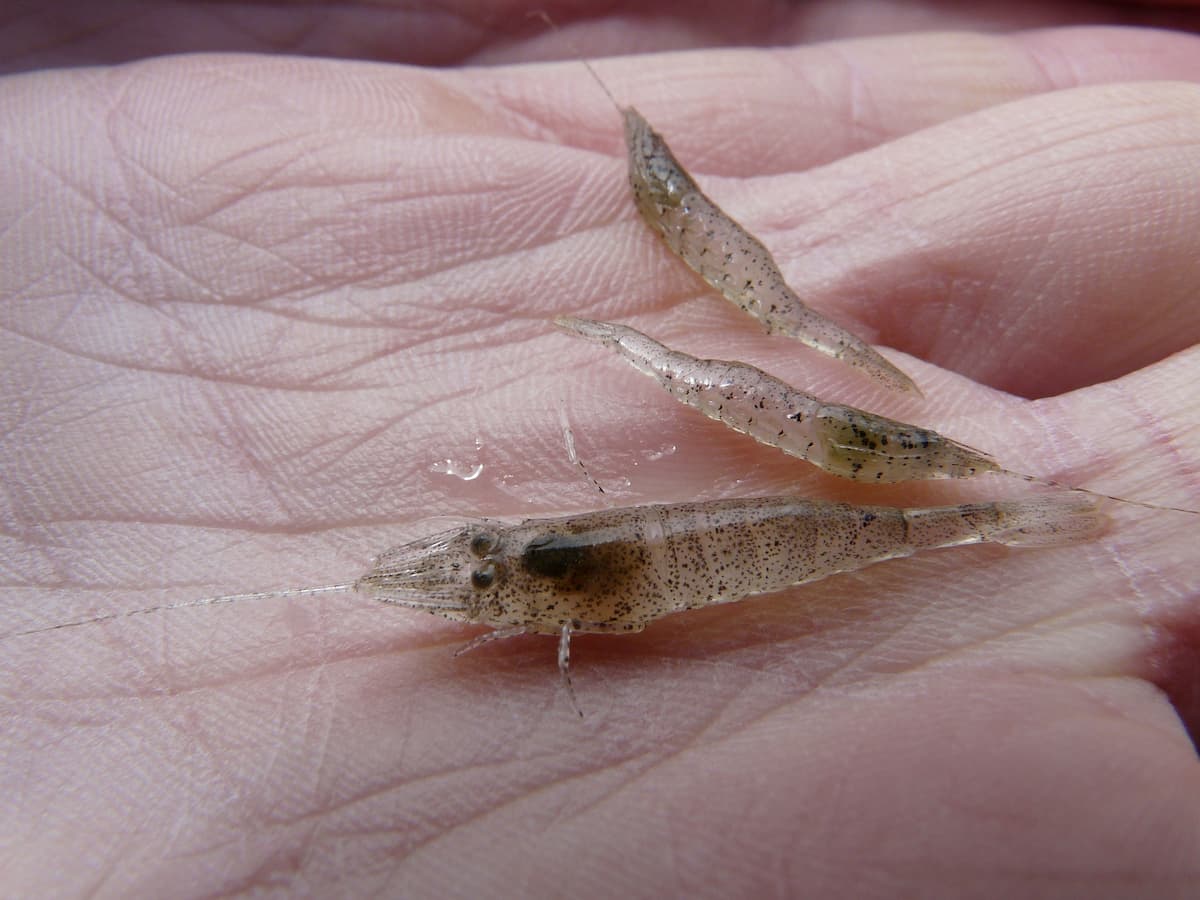
How to start shrimp farming in South Africa
What is shrimp farming?
Shrimp farming in South Africa is a low-input, environmentally friendly production method. The farms use natural resources and minimal inputs to produce high-quality shrimp. The process is simple: farmers place the shrimps into tanks with water and feed them until they are ready to be harvested.
Freshwater shrimp farming in South Africa
South Africa is a major producer of freshwater shrimp. The country has extensive freshwater resources, making shrimp farming a viable option for farmers. Freshwater shrimp farming in South Africa uses various methods, including open-water ponds and closed systems such as raceways. The main advantage of shrimp farming in South Africa is the country’s plentiful freshwater resources.
Farmers can also produce high-quality shrimp without relying on seawater as an input. The availability of freshwater also minimizes environmental concerns associated with coastal shrimp farming. However, shrimp farming in South Africa is vulnerable to flooding and drought conditions, which can damage crops and lead to loss of revenue. Additionally, there is the potential for diseases to spread among the shrimp population, posing a challenge for farmers.
Key rules for starting shrimp farming in South Africa
- Choose a suitable location – Shrimp farming can be done anywhere there is water available, but it is important to choose a location with adequate sunlight and temperature.
- Get the right equipment – To be successful with shrimp farming, you will need the right equipment, including pens and tanks, for your shrimp to reside in. Make sure to research what is available before making a purchase.
- Get the right feed and water supplies – Shrimp require proper feed and water supplies to survive, so make sure you have these items on hand when starting this type of farming. Purchase feed from reputable suppliers who will guarantee quality results.
- Monitor your shrimp closely – As with any livestock operation, keeping an eye on them constantly is essential for their well-being. Ensure you have effective monitoring systems if you plan to continue this farming long-term.
In case you missed it: Bee Farming in South Africa: How to Start, Beekeeping Cost, and Profit
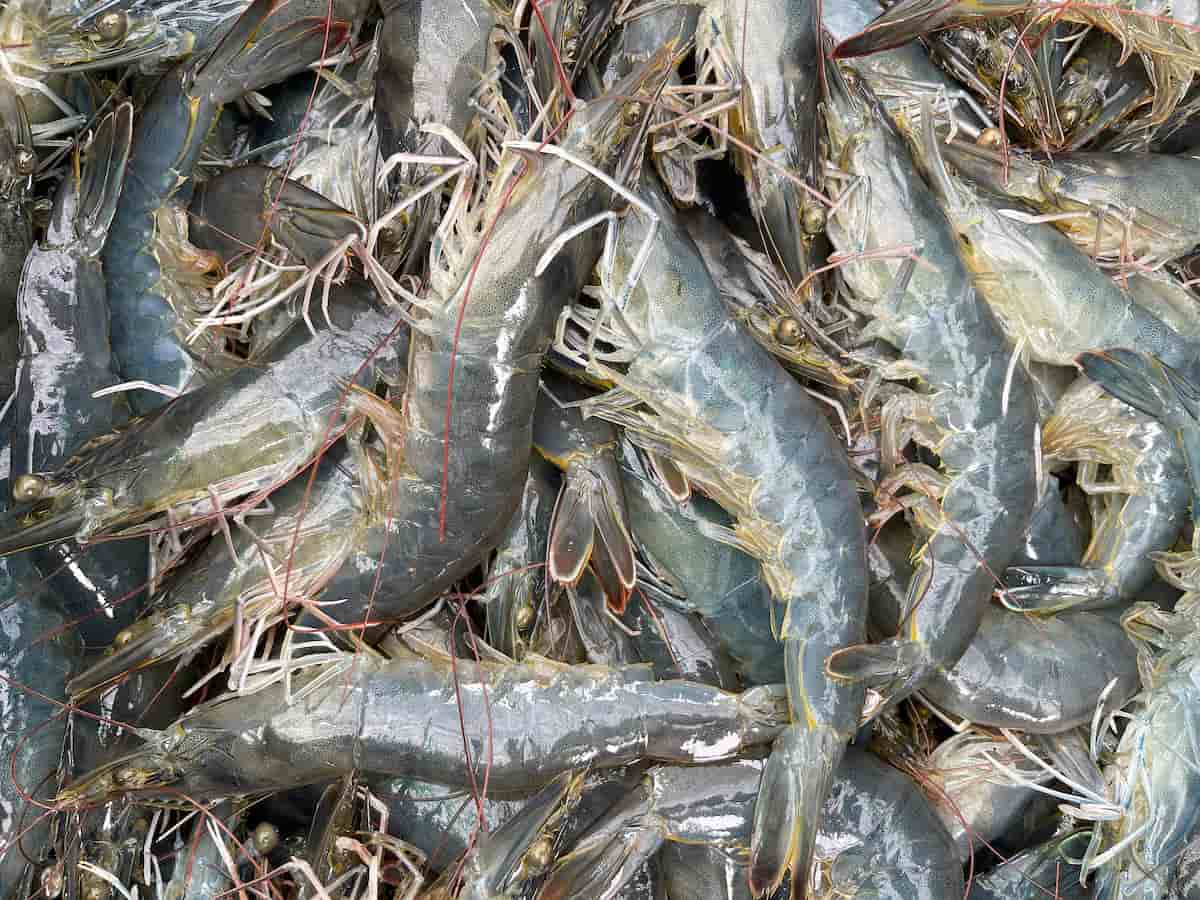
Shrimp farming states in South Africa
The major shrimp producers in South Africa are KwaZulu Natal, Western Cape, Eastern Cape, and Gauteng. The main regions where shrimp are farmed are Richards Bay in KwaZulu Natal, Agulhas Bank in Western Cape, Eastern Cape, and False Bay in Gauteng. There are about 150 shrimp farms in South Africa that produce both Whiteleg herring and Pinktail Shrimp. The most popular variety is the Whiteleg herring because it fetches a higher price at the market.
About 60 percent of the total output is exported to Europe, while 40 percent goes to the Asia Pacific. The main shrimp farming regions are the southwestern coast, KwaZulu-Natal and Durban, and Mpumalanga’s north-eastern coast. Large estuarine and coastal waters can also be used for shrimp farming. Shrimp farming is an intensive activity and requires a lot of investment. The basic requirements for a shrimp farm include land, water, and feed supplies.
How to start a shrimp farming business in South Africa
- A permit from the Department of Environmental Affairs is required, and you will also need some land to house the shrimp pens. You can buy or lease this land from a private individual or company. You will need a water source for the shrimp pens next.
- Shrimp farming is a lucrative business in South Africa, as the country has abundant shrimp resources. Therefore, shrimp farming in South Africa can be a profitable venture. However, there are several things you need to consider before starting a shrimp farm, including the climate and soil conditions in your area. You will also need a good supply of feed and water for your shrimp.
- Firstly, you will need to consult with an agricultural consultant about your area’s climate and soil conditions. This information is essential for setting up your shrimp farm correctly. You will also need to decide on the size of your farm. A small farm can produce 50-100 pounds of shrimp per week, while a large farm can produce 1,000-2,000 pounds per week.
- Next, you will need to set up a system for feeding and watering your shrimp. You will need access to good-quality feed and water sources. Make sure you have enough feed storage space and a means of distributing the feed evenly throughout the farm. You should also have a system for cleaning the feed tanks and water sources.
- You will also need to purchase or lease land for your shrimp farm. The land should be free from trees and other vegetation that could interfere with shrimp farming activities. The best soil type for shrimp farming is sandy soils with high fertility levels. You should test the soil before starting the farm to ensure it is suitable. Additionally, you will need to erect fencing around your property so that livestock and people do not access the property accidentally.
Shrimp farming loans and subsidies in South Africa
Several shrimp farming loans and subsidies are available in South Africa. These can be applied through the Department of Water Affairs, Agricultural Development, and Forestry (DWA) or commercial banks. The most common type of subsidy is the Feed-in tariff, which provides an assured price for electricity generated from renewable energy sources, such as solar or wind power, used to produce shrimp farming.
Another subsidy is the Rural Development Programme (RDP). This provides direct financial assistance to farmers in rural areas who are undertaking activities that promote economic development. The RDP can provide loans, technical assistance, and access to markets for agricultural products. There are also several commercial loans available to shrimp farmers. These offer lower interest rates and longer terms than government loans, making them more affordable.
In addition, they usually have less stringent repayment schedules and collateral requirements. The main obstacle shrimp farmers face in South Africa is competition from other agricultural sectors, particularly cattle farming. This results in low prices for shrimp products on the market, which makes it difficult for farmers to cover the costs associated with production.
In case you missed it: How to Start Goat Farming in South Africa: Business Plan, Breeds, Cost, Profit, and Management
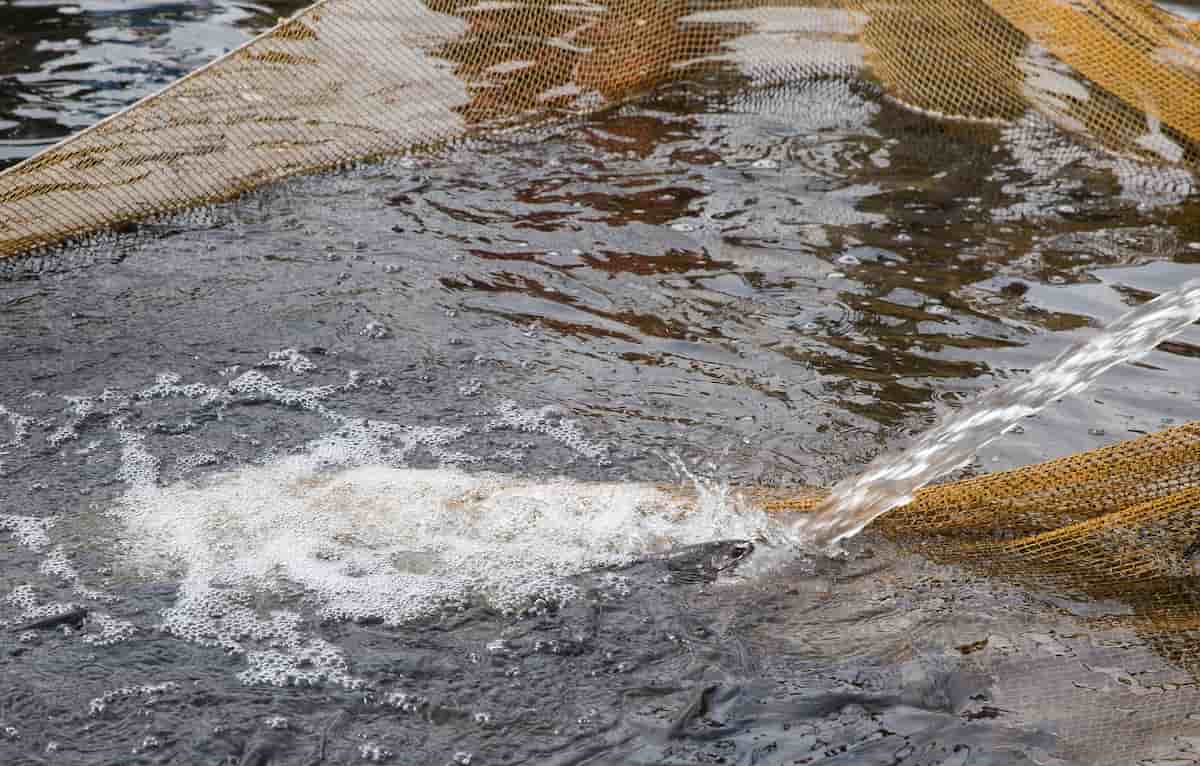
The different types of shrimp farming methods in South Africa
- One of the most common methods is cage farming. Cage farming is when shrimp are kept inside cages or structures made of mesh. The cages usually have a lot of space so the shrimp can move around and access food and water. This type of farming is very humane because the shrimp don’t have to live in crowded conditions like fish farms, where they often swim in isolation.
- The next method commonly used for shrimp farming in South Africa is open-water culture. Open-water culture involves keeping the shrimp in standing water which makes them easier to manage and keeps them from fouling other parts of the farm environment.
- The most common method of shrimp farming is the recirculating pond system. In this system, shrimp are raised in large ponds where they feed on organic matter and aquatic plants. The water then passes through filters before being released into the ocean. However, recirculating systems are often criticized for their environmental impact, requiring a lot of fresh water.
- Brackish Water Shrimp Farming (BWShf) is another type of shrimp Farming that uses saltwater with low dissolved oxygen (DO) levels. The brackish water then goes through a filter to remove impurities before it is released into the ocean. This system has two benefits over open-ocean shrimp Farming: it uses less land than open-ocean farming and reduces environmental impact by keeping harvested areas clean. In BWShf, brackish water from inland lakes or reservoirs is used to raise shrimps.
Site selection for shrimp culture in South Africa
When it comes to shrimp farming in South Africa, there are a few things you need to keep in mind. First and foremost, your site needs to be suited for shrimp culture. Next, you’ll need to ensure your site has the right drainage and aeration capabilities. And finally, you’ll want to ensure that the water temperature is appropriate for shrimp culture. Once you’ve determined all of these factors, it’s time to look at the different types of shrimp farm options available to you in South Africa.
There are open-top, closed, and integrated systems, each with advantages and disadvantages. Once you’ve chosen a system, you must consider how much land you will need and what kind of feed your shrimps require. Overall, choosing a site for shrimp farming in South Africa is a complex process that requires careful thought and consideration. If done correctly, however, reap the rewards of raising some delicious fresh seafood!
Shrimp farming challenges in South Africa
One of the main challenges of shrimp farming is finding a suitable site for the farm. Shrimp farms need to be located near bodies of water where they can feed on plankton, which is why many shrimp farms are located near the ocean. However, finding a location that will provide these resources is often difficult, and farmers have to contend with environmental concerns such as pollution and overfishing. Another challenge of shrimp farming is ensuring that the shrimp population remains healthy.
The disease can quickly spread through a population of shrimp, and if left unchecked, this could result in a decline in production. Therefore, farmers must take measures to prevent the disease from spreading, including regularly monitoring their populations and using proper sanitation facilities. Climate change also challenges the shrimp farming industry in South Africa. Climate change caused by human activity has led to rising sea levels and more extreme weather conditions, damaging crops and negatively affecting animal health.
Shrimp farmers must take account of these changes when making decisions about how to farm their land and must also consider ways to adapt their production methods if necessary. Despite these challenges, shrimp farming has proven economically viable in many developing countries. It can help reduce poverty by providing an income source for farmers, and it can also help alleviate environmental concerns by creating jobs and reducing pollution levels.
In case you missed it: How to Start Fish Farming in South Africa: Key Rules, Business Plan, Cost, Profit, and Management
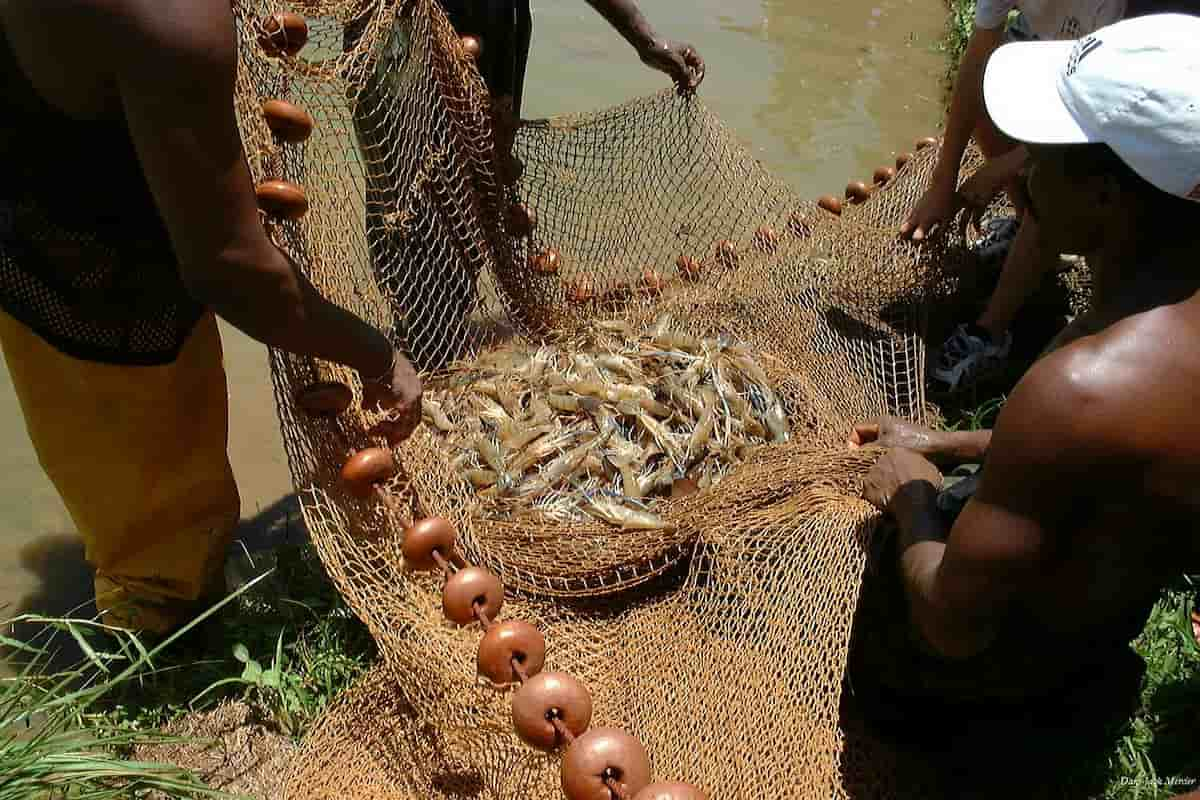
Pond design for shrimp farming in South Africa
Pond design for shrimp farming in South Africa is important for several reasons. First, the pond must be large enough to accommodate the shrimp population and equipment. Second, the pond must be well-drained, so water flows out quickly in an emergency. Third, the pH of the water must be stable so that shrimp can grow healthy. Finally, proper filtration is essential to protect fish and other aquatic life.
Caring & other management tips for shrimp farming in South Africa
1. Caring for shrimp is essential to produce quality shrimp. Follow these tips to ensure your shrimp are healthy and productive:
- Feed them a balanced diet of fresh, clean water and high-quality feed.
- Keep their tanks clean and clear of debris.
- Rotate the shrimp tank to expose them to new environments and entertain them.
2. There are a few other important things you need to know about keeping shrimp in South Africa:
- Shrimp thrive in warm saltwater conditions, so make sure your Tank has at least 12 inches of water depth, ideally 18 inches.
- Do not keep more than six shrimp per gallon of water. Overpopulation can lead to stress, disease, and death.
Water quality for shrimp farming in South Africa
Shrimp farming in South Africa is an economically viable industry that has grown rapidly in recent years. The main reason for this growth is the high demand for shrimp meat and shells from overseas markets. The water quality requirements for shrimp farming vary depending on the location and type of farm.
For example, freshwater shrimp farms need clean waters with low levels of bacteria and metals, while saltwater shrimp farms need seawater with low salt and parasites. To maintain a high level of water quality, all water inputs must be carefully screened and monitored. Farms also rely on natural filtration systems to remove contaminants before they reach the shrimp ponds.
Shrimp species in South Africa
Over 200 species of shrimp can be farmed in South Africa, but some of the most popular include the tiger prawn (Penaeus monodon), red swamp prawn, and imported white shrimp. Some other shrimp species are Caridina nilotica, Palaemon peringueyi, Palaemon capensis, Indian prawn, Upogebia Africana, Odontodactylus scyllarus, Upogebia capensis, Parktown prawn, Kraussillichirus kraussi, etc.
In case you missed it: How to Start Organic Farming in South Africa: Key Rules, Certification, Business Plan, Crops, and Management
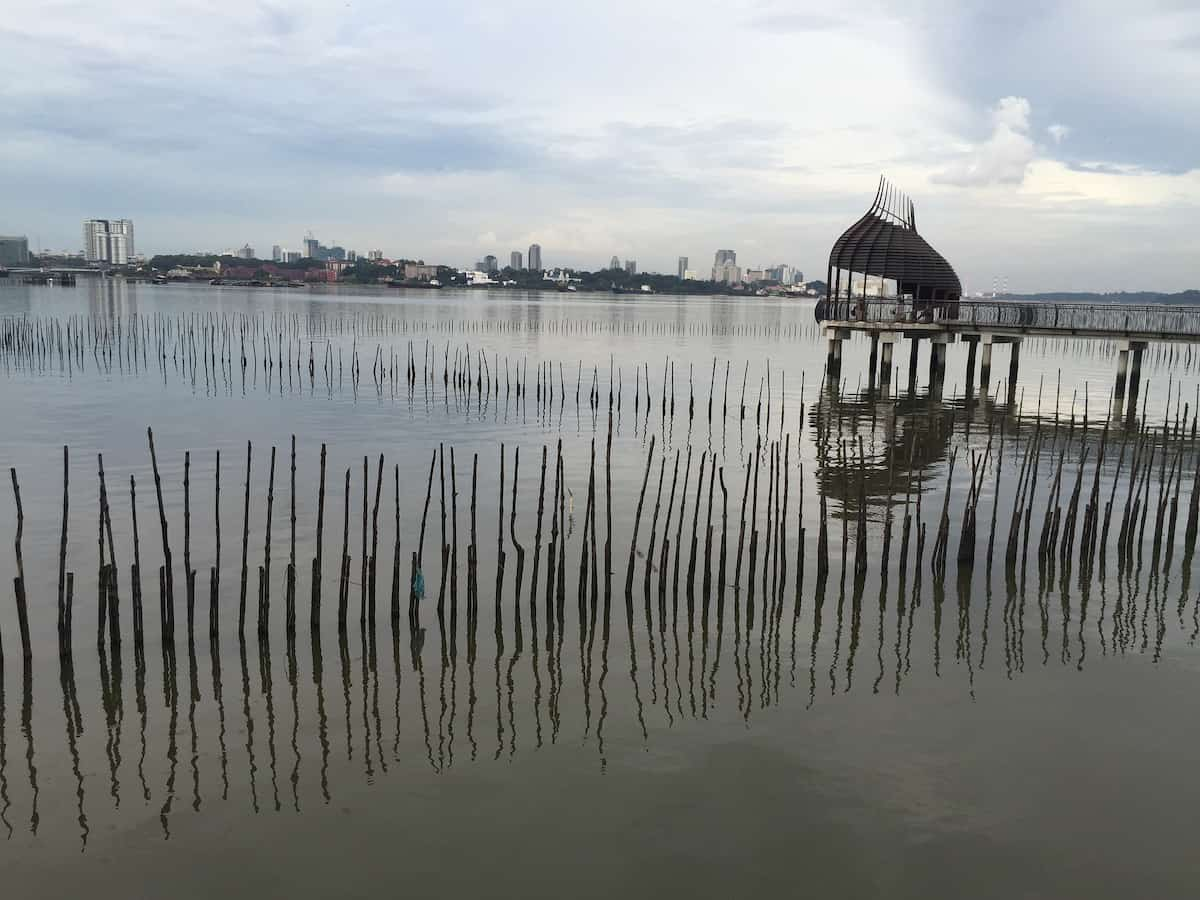
Feeding tips for shrimp farming in South Africa
Shrimp farming is a popular and lucrative business in South Africa. Feeding shrimp should be done daily to ensure good health and growth. Feed your shrimp a quality pellet diet or water with added food-grade vitamins, minerals, and amino acids. You can also offer them fresh vegetables or fruit as part of their diet.
Proper water temperature is essential for shrimp farming. Keep the water temperature between 25-28°C at all times during the day and night. Provide supplementary heat to the tanks if the water temperature falls below 25°C. Make sure you have a good filtration system in place to remove any toxins from the water. Regularly clean the tanks and filters with fresh water to keep your shrimp healthy
Pond design for shrimp farming in South Africa
Pond design is important to optimize production. The pond length, width, and depth should be determined based on the expected amount of shrimp to be raised and the available space. The pond should be divided into sections with a water exchange system in between to keep the water temperature consistent.
Shrimp farming set up cost in South Africa
Shrimp farming has become a lucrative business in South Africa. The average cost of setting up a shrimp farm here is around R5 million. This includes buying land, building ponds and levees, and purchasing equipment like feed mills and hatcheries. Nevertheless, there are some ways to reduce these costs. First, you can find land that is already partially developed or leased. Secondly, you can look for government grants or subsidies that can help reduce your overall investment costs.
The risks of shrimp farming in South Africa
Shrimp farming is a lucrative business, but it comes with several risks. These include the possibility of diseases and parasites spreading among the shrimp and water pollution. And because shrimp are kept in captivity, they are at risk of being stressed or depressed, which could lead to health problems.
Shrimp harvesting tips in South Africa
1. Choose a site with good water quality: Shrimp need good water quality to thrive and will not survive in poor water conditions. Ensure your site has adequate drainage, so that runoff from the pond does not contaminate the water.
2. Set up a system for collecting shrimp: A good way to harvest shrimp is to set up a system where they can be collected by hand. This system should include traps, nets, or buckets that can be easily emptied and cleaned.
3. Harvest when they are ready: When harvesting shrimp, pay attention to their size and coloration to determine when they are ready. Shrimp will turn pink/orange when they reach maturity and light green when they have begun birthing eggs.
In case you missed it: How to Start Rabbit Farming in South Africa: Key Rules, Breeds, Business Plan, Cost, Profit, Subsidy, and Loan
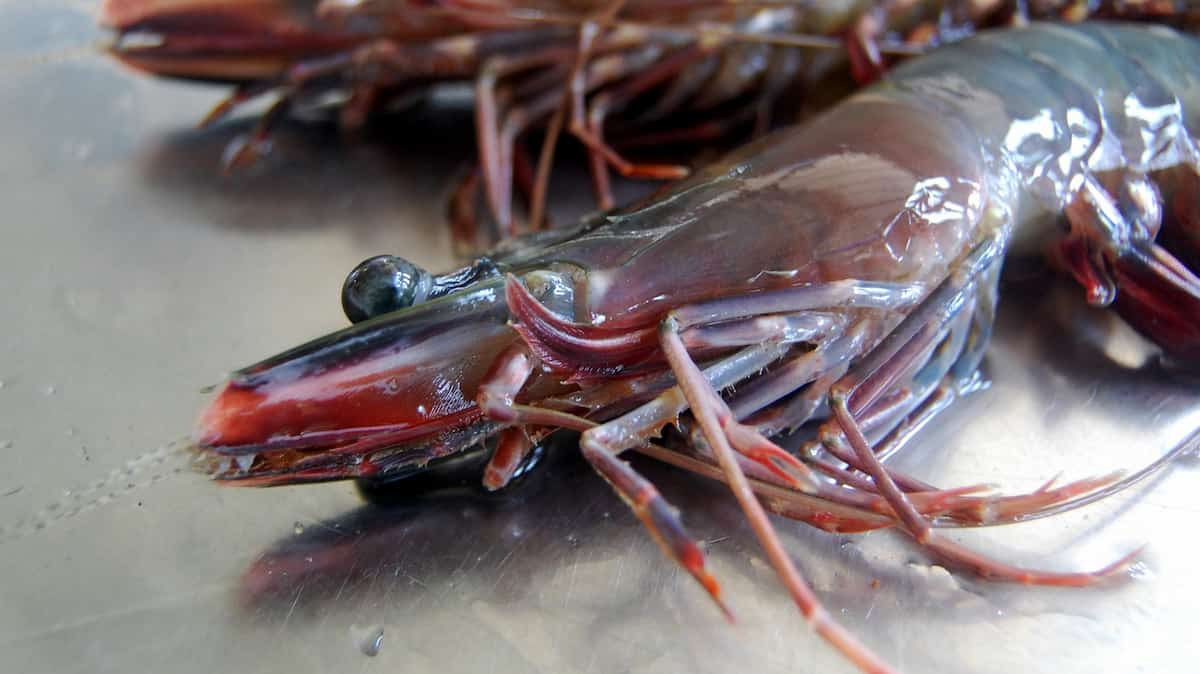
Marketing for shrimp farming business in South Africa
South Africa is an ideal place to start a shrimp farming business because of its warm climate and ample freshwater resources. The country has over 50 million people, and the average annual income is around $5,000. The set-up cost for shrimp farming in South Africa is relatively low, and the return on investment is high due to the high demand for shrimp globally.
Conclusion
Shrimp farming is an important industry in South Africa because it employs many people and contributes significantly to the country’s GDP. The industry is growing rapidly due to increasing demand from both domestic and international marketplaces. In addition, shrimp farming is an environmentally sustainable way to produce shrimp and has a long history in South Africa.
- Types of Pesticides Used in Agriculture: A Beginner’s Guide
- Economical Aquaculture: A Guide to Low-Budget Fish Farming
- 15 Common Planting Errors That Can Doom Your Fruit Trees
- How to Make Houseplants Bushy: Effective Tips and Ideas
- Innovative Strategies for Boosting Coconut Pollination and Yield
- Pollination Strategies for Maximum Pumpkin Yield
- The Complete Guide to Chicken Fattening: Strategies for Maximum Growth
- Natural Solutions for Tulip Problems: 100% Effective Remedies for Leaf and Bulb-Related Issues
- Revolutionizing Citrus Preservation: Towards a Healthier, Greener Future
- Natural Solutions for Peony Leaf and Flower Problems: 100% Effective Remedies
- Maximizing Profits with Avocado Contract Farming in India: A Comprehensive Guide
- Natural Solutions for Hydrangea Problems: 100% Effective Remedies for Leaf and Flowers
- The Ultimate Guide to Choosing the Perfect Foliage Friend: Bringing Life Indoors
- From Sunlight to Sustainability: 15 Ways to Use Solar Technology in Agriculture
- The Ultimate Guide to Dong Tao Chicken: Exploring from History to Raising
- The Eco-Friendly Makeover: How to Convert Your Unused Swimming Pool into a Fish Pond
- Mastering the Art of Delaware Chicken Farming: Essentials for Healthy Backyard Flocks
- 20 Best Homemade Fertilizers for Money Plant: DIY Recipes and Application Methods
- How to Craft a Comprehensive Free-Range Chicken Farming Business Plan
- Brighten Your Flock: Raising Easter Egger Chickens for Beauty and Bounty
- How to Optimize Your Poultry Egg Farm Business Plan with These Strategies
- Subsidy for Spirulina Cultivation: How Indian Government Schemes Encouraging Spirulina Farmers
- Ultimate Guide to Raising Dominique Chickens: Breeding, Feeding, Egg-Production, and Care
- Mastering the Art of Raising Jersey Giant Chickens: Care, Feeding, and More
- Ultimate Guide to Raising Legbar Chickens: Breeding, Farming Practices, Diet, Egg-Production
- How to Raise Welsummer Chickens: A Comprehensive Guide for Beginners
- How to Protect Indoor Plants in Winter: A Comprehensive Guide
- Ultimate Guide to Grow Bag Gardening: Tips, Tricks, and Planting Ideas for Urban Gardeners
- Guide to Lotus Cultivation: How to Propagate, Plant, Grow, Care, Cost, and Profit
- Agriculture Drone Subsidy Scheme: Government Kisan Subsidy, License, and How to Apply Online
- Ultimate Guide to Raising Araucana Chickens: Breed Profile, Farming Economics, Diet, and Care
- Bringing Hydroponics to Classroom: Importance, Benefits of Learning for School Students
- Ultimate Guide to Raising Polish Chickens: Breed Profile, Farming Economics, Diet, and Care
- Ultimate Guide to Raising Australorp Chickens: Profile, Farming Economics, Egg Production, Diet, and Care
- Silkie Chicken Farming: Raising Practices, Varieties, Egg Production, Diet, and Care
- Sussex Chicken Farming: Raising Practices, Varieties, Egg Production, Diet and Care